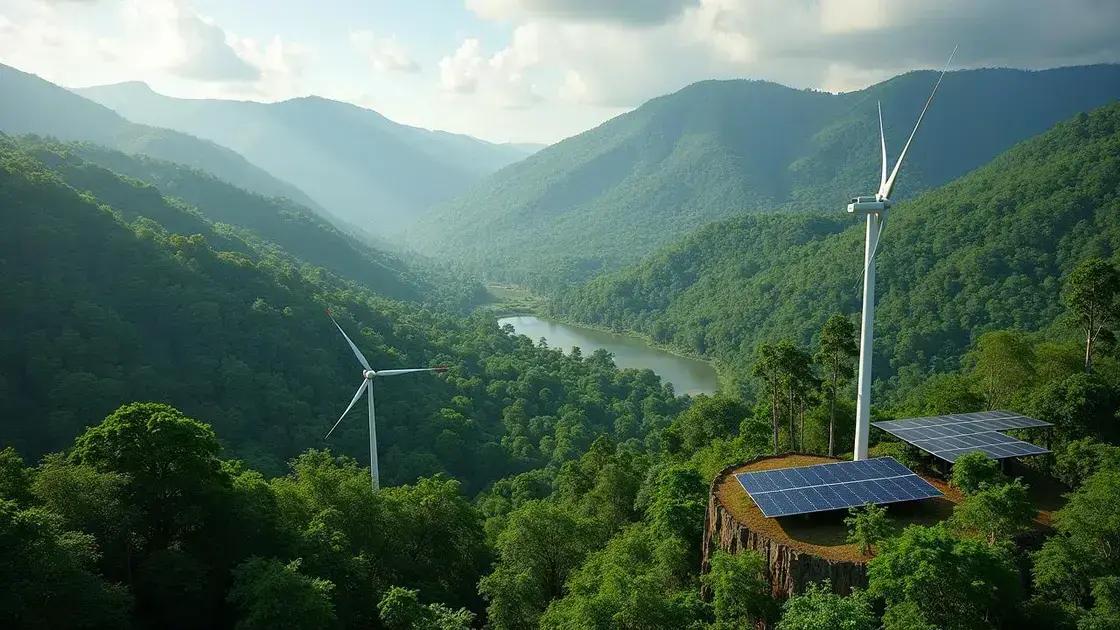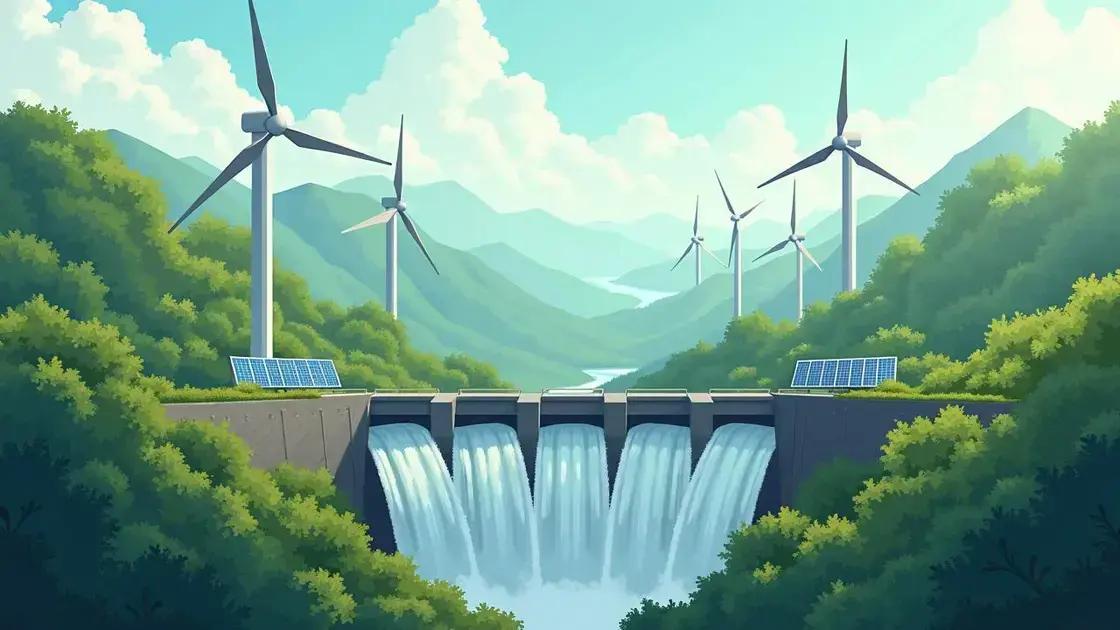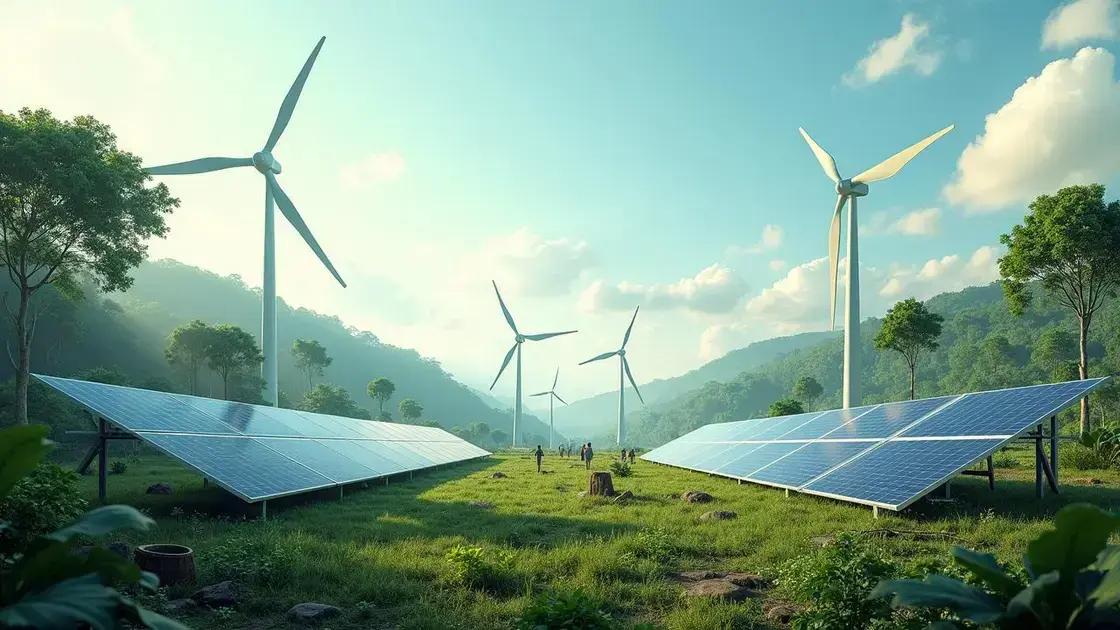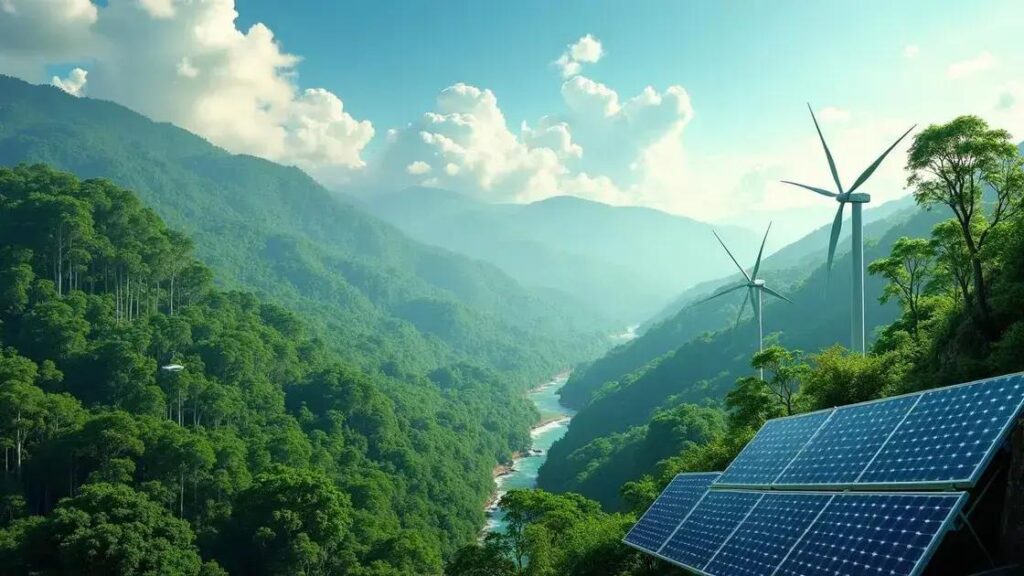Amazonic Power harnesses renewable energy from the Amazon rainforest, utilizing solar, wind, and hydropower to promote sustainability, reduce carbon footprints, and enhance community well-being, making it a vital resource in the fight against climate change.
What is Amazonic Power? In recent years, the term “Amazonic Power” has gained traction within the realm of sustainable energy. This concept embodies the relationship between the lush Amazon rainforest and renewable energy sources. As we delve into this topic, we will explore not only its definition but also the vast benefits and ecological importance it holds. Join us as we uncover how Amazonic Power works and its promising future in transforming global energy landscapes.
Understanding Amazonic Power

Amazonic Power refers to the unique potential of harnessing renewable energy from the Amazon rainforest. This vibrant ecosystem is not just rich in biodiversity; it also plays a crucial role in generating clean energy through sustainable practices. It emphasizes the importance of this rainforest in maintaining ecological balance while providing energy solutions.
Key Components of Amazonic Power
The core idea behind Amazonic Power includes the utilization of solar, wind, and hydropower derived from the rainforest environment. Utilizing solar energy from the abundant sunlight can lead to significant electricity generation. Likewise, wind energy can be tapped in areas with favorable wind patterns.
Sustainable Practices
Understanding how to integrate sustainable energy sources is vital. Farmers and local communities are encouraged to adopt practices that protect the rainforest while benefiting from energy production. This could include agroforestry, which combines agriculture with tree planting. Such practices contribute to energy generation without destroying the habitat.
Impact on Local Communities
Amazonic Power also has substantial implications for local populations. By harnessing this power, communities can access clean energy, reducing their reliance on fossil fuels. This shift can lead to economic boosts through cheaper energy costs and new job opportunities in energy production.
In summary, understanding Amazonic Power integrates ecological, economic, and social dimensions. It presents a powerful solution to energy challenges while promoting sustainability and biodiversity conservation.
The Benefits of Amazonic Energy

The benefits of Amazonic Energy are numerous and far-reaching. This clean energy source plays a vital role in reducing carbon footprints while providing sustainable solutions for communities. Adopting Amazonic Energy helps protect the environment and leads to healthier ecosystems.
Environmental Advantages
One of the primary benefits is its low environmental impact. By tapping into renewable sources such as solar and wind energy, we significantly decrease greenhouse gas emissions. This is crucial for combating climate change and preserving biodiversity in the Amazon rainforest.
Economic Benefits
Amazonic Energy also offers economic benefits. By investing in renewable energy projects, local communities can create jobs and boost their economies. It opens up opportunities for new businesses focused on energy production, maintenance, and sustainability practices.
Energy Independence
Using Amazonic Energy allows communities to achieve energy independence. No longer will they rely solely on fossil fuels, which can be expensive and uncertain. With local energy production, communities can ensure more stability in their energy supplies and costs.
Improved Quality of Life
Access to clean, renewable energy leads to an improved quality of life for residents. It provides reliable electricity for homes, schools, and healthcare facilities, enhancing overall living standards. Additionally, by using clean energy, communities can reduce pollution, leading to better health outcomes.
Overall, embracing Amazonic Energy presents a win-win situation for the environment and local populations. It strengthens the fight against climate change while providing sustainable benefits that can transform communities.
How Amazonic Power Works

Understanding how Amazonic Power works involves knowing the renewable energy sources the Amazon rainforest offers. These sources include solar power, wind energy, and hydropower, which can be harnessed sustainably.
Solar Power Generation
The Amazon region receives abundant sunlight, making solar energy a key component of Amazonic Power. Solar panels can be installed on rooftops, in communities, and even in remote areas. They convert sunlight into electricity, providing a clean energy source that can power homes and businesses.
Wind Energy Utilization
In addition to solar power, certain areas of the Amazon have favorable wind patterns. Wind turbines can capture this energy and convert it into electricity. This renewable source complements solar energy, especially during times when sunlight is limited.
Hydropower from Rivers
The Amazon rainforest is home to numerous rivers. Hydropower can be generated by harnessing the flow of these rivers, producing electricity through dams or small-scale hydro systems. This method uses the natural movement of water, providing a steady energy source.
Integration and Distribution
These renewable energy sources can be integrated to create a sustainable energy grid. Local communities can generate their electricity and reduce reliance on external power. Moreover, advances in technology help in storing energy, ensuring a continuous supply even when nature’s resources fluctuate.
By combining these elements, Amazonic Power operates efficiently and sustainably, supporting both environmental health and local communities’ energy needs while working towards a greener future.
The Future of Amazonic Power

The future of Amazonic Power looks promising as the world shifts towards sustainable energy solutions. With increasing awareness about climate change, there is a growing push to utilize clean energy sources found within the Amazon rainforest. This not only helps the environment but also benefits local communities.
Technological Advancements
Innovations in renewable energy technologies are essential to the future of Amazonic Power. Advancements in solar panels, wind turbines, and hydroelectric systems will make energy generation more efficient and accessible to local populations. These improvements could lead to lower costs and greater adoption rates.
Policy and Support
Government policies play a vital role in determining the success of Amazonic Power. Support for sustainable practices and investment in renewable energy projects can create a favorable environment for growth. International partnerships and funding can also enhance efforts towards harnessing the power of the Amazon sustainably.
Community Involvement
Engaging local communities is crucial for the future of Amazonic Power. By involving residents in decision-making processes and training programs, communities can create strong advocates for renewable energy. This grassroots approach ensures that the benefits of Amazonic Power are spread widely and equitably.
Global Impact
As the demand for clean energy rises globally, Amazonic Power has the potential to make a significant impact beyond local communities. By exporting renewable energy and technologies, the Amazon can become a key player in the global energy market, contributing to the fight against climate change.
In summary, the future of Amazonic Power holds great potential. With the right combination of technology, policy, community support, and global collaboration, it can become a leading example of sustainable energy use.
In Summary, What is Amazonic Power?
Amazonic Power is a powerful concept that harnesses the immense potential of renewable energy sources found in the Amazon rainforest. Through solar, wind, and hydropower, this energy can be utilized to promote sustainability and address climate change.
Understanding Amazonic Power reveals its numerous benefits, including environmental protection, economic growth, and improved quality of life for local communities. The future of Amazonic Power is bright, driven by technological advancements, strong policies, and active community engagement.
As we embrace this sustainable path, it is crucial to recognize the impact of Amazonic Power not just locally but on a global scale. By prioritizing renewable energy from the Amazon, we can fuel a cleaner, greener future for our planet.
FAQ – Frequently Asked Questions About Amazonic Power
What is Amazonic Power?
Amazonic Power refers to the renewable energy harnessed from the Amazon rainforest, utilizing sources like solar, wind, and hydropower.
What are the benefits of using Amazonic Energy?
The benefits include reducing carbon footprints, promoting local economies, ensuring energy independence, and improving the quality of life for communities.
How does Amazonic Power work?
Amazonic Power works by integrating solar panels, wind turbines, and hydropower systems to produce clean energy sustainably.
What challenges does Amazonic Power face?
Challenges include technological development, government policies, and ensuring community involvement and investment.
What does the future hold for Amazonic Power?
The future of Amazonic Power is promising, with advancements in technology, stronger policies for support, and growing recognition of the need for sustainable energy.
How can local communities get involved with Amazonic Power?
Local communities can engage by participating in decision-making, training programs, and advocating for renewable energy projects.












